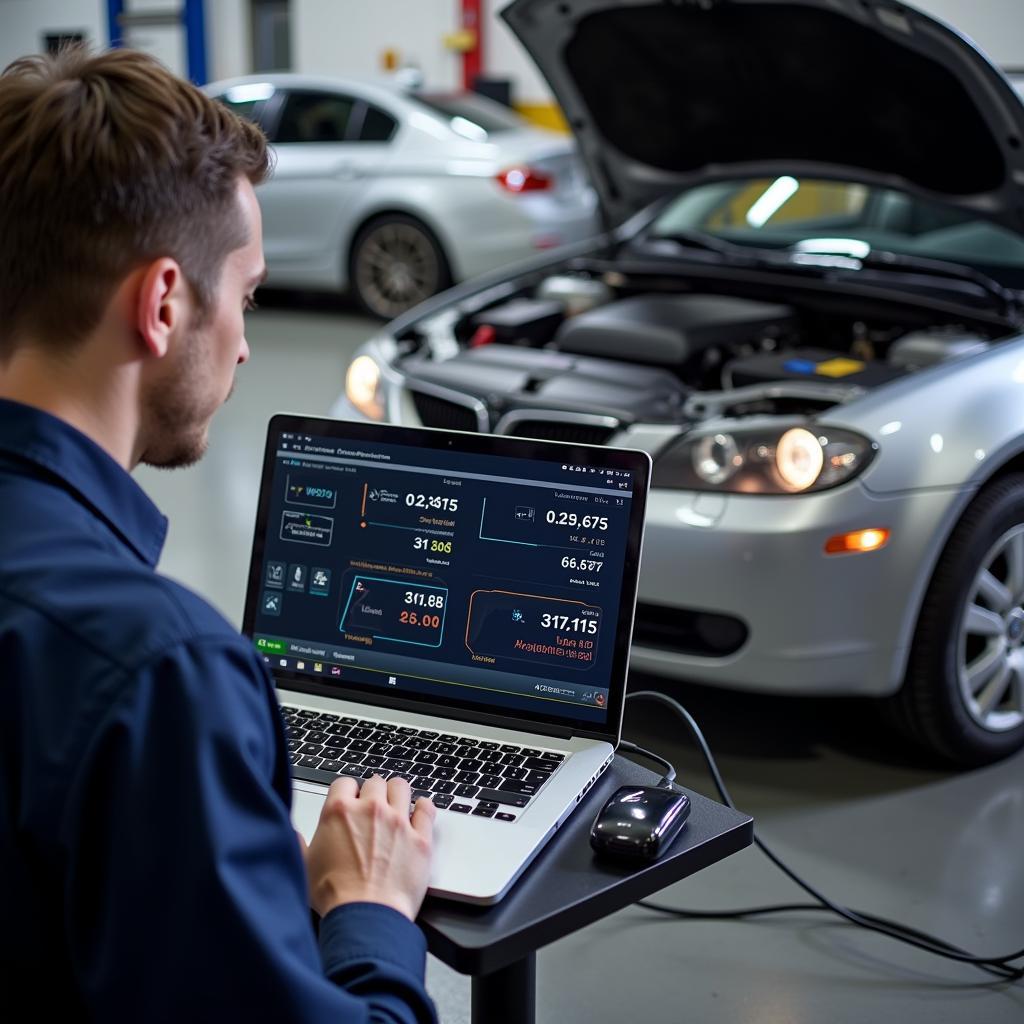A brand new car refusing to start can be incredibly frustrating. Whether it’s a dead battery, a faulty starter, or a more complex electronic issue, understanding why your new car won’t start is the first step to getting back on the road. This article will guide you through common causes and solutions, from simple checks to more advanced diagnostic techniques, empowering you to address the issue effectively.
Common Reasons Why a New Car Won’t Start
Several factors can contribute to a new car not starting, ranging from simple oversights to more serious mechanical or electrical problems.
Dead Battery
Even in a new car, a dead battery is a common culprit. Leaving lights on, infrequent use, or even a faulty alternator can drain the battery.
- Check the battery terminals: Ensure they are clean and tightly connected. Corrosion can prevent the battery from delivering power.
- Jump-start the car: If the battery is dead, jump-starting it is a quick fix. Be sure to follow the correct procedure to avoid damage.
- Test the battery: If jump-starting works, have the battery tested to determine its health. A new battery may be necessary.
Faulty Starter
A faulty starter motor can prevent the engine from turning over. This is characterized by a clicking sound when you turn the key.
- Listen for clicking: A clicking sound usually indicates a starter problem.
- Tap the starter: Sometimes, a gentle tap on the starter motor can temporarily fix the issue. This is a temporary solution, and the starter likely needs replacement.
- Have the starter tested: A mechanic can test the starter to confirm its functionality.
Ignition System Problems
The ignition system is responsible for igniting the fuel-air mixture in the engine. A faulty ignition switch, a bad ignition coil, or worn spark plugs can cause starting problems.
- Check the ignition switch: Ensure the key is turning properly in the ignition. A worn-out ignition switch may need replacement.
- Inspect the spark plugs: Worn spark plugs can prevent the engine from starting. Check their condition and replace if necessary.
Fuel System Issues
Problems with the fuel system, such as a lack of fuel, a clogged fuel filter, or a malfunctioning fuel pump, can prevent the engine from starting.
- Check the fuel gauge: Ensure there is sufficient fuel in the tank.
- Inspect the fuel filter: A clogged fuel filter restricts fuel flow. Replace the fuel filter if necessary.
- Check the fuel pump: Listen for the fuel pump engaging when you turn the key. If you don’t hear it, the fuel pump may be faulty.
What to Do When Your New Car Won’t Start: A Step-by-Step Guide
- Check the obvious: Ensure the car is in park (or neutral for manual transmission), the parking brake is engaged, and the steering wheel is unlocked.
- Inspect the battery: Check the battery terminals for corrosion and tightness. Try jump-starting the car.
- Listen for the starter: A clicking sound usually indicates a starter problem.
- Check the fuel gauge: Make sure you have enough fuel.
- Review the owner’s manual: Consult the owner’s manual for specific troubleshooting tips for your car model.
“In many cases, a new car not starting can be attributed to simple issues like a dead battery or user error. However, if the problem persists, seeking professional help is crucial,” advises John Smith, ASE Certified Master Technician.
Advanced Diagnostics and Remote Software Solutions
For more complex issues, advanced diagnostic tools and remote software solutions can be invaluable. These tools can pinpoint the exact cause of the problem, often without needing to physically visit a mechanic.
- Remote diagnostics: Connect your car to a diagnostic tool that can be accessed remotely by a technician. This allows for quick and efficient troubleshooting.
- Software updates and programming: Sometimes, a software glitch can prevent a car from starting. Remote software updates and programming can resolve these issues.
Conclusion: Getting Your New Car Back on Track
A new car not starting can be a frustrating experience. By understanding the common causes and following the troubleshooting steps outlined in this article, you can often identify and resolve the problem yourself. For more complex issues, remember that professional assistance and remote diagnostic services are available to get your new car back on the road quickly and efficiently. Don’t let a starting problem dampen your new car excitement!
 Mechanic Performing Remote Car Diagnostics
Mechanic Performing Remote Car Diagnostics
“Remote diagnostics and software solutions are revolutionizing the automotive repair industry. They offer faster, more convenient, and often more cost-effective solutions for car owners,” adds Jane Doe, Automotive Electrical Engineer.
FAQ
-
Can a brand new car have a dead battery? Yes, even new car batteries can discharge due to various factors, including manufacturing defects, parasitic drain, or prolonged storage.
-
What is the most common reason a new car won’t start? A dead battery is often the most common culprit.
-
How can I prevent my new car battery from dying? Ensure all lights and accessories are off when the car is parked, limit short trips, and have the battery tested periodically.
-
Is it safe to jump-start a new car? Yes, it’s generally safe, but always follow the correct jump-starting procedure outlined in your owner’s manual.
-
What should I do if my new car still won’t start after trying these troubleshooting steps? Contact your dealership or a qualified mechanic for further diagnosis and repair.
-
How can remote diagnostics help with a new car that won’t start? Remote diagnostics can quickly pinpoint the cause of the problem, potentially saving time and money on repairs.
-
Are remote software updates covered under warranty? Warranty coverage for software updates varies depending on the manufacturer and specific warranty terms. Consult your owner’s manual or dealership for details.


